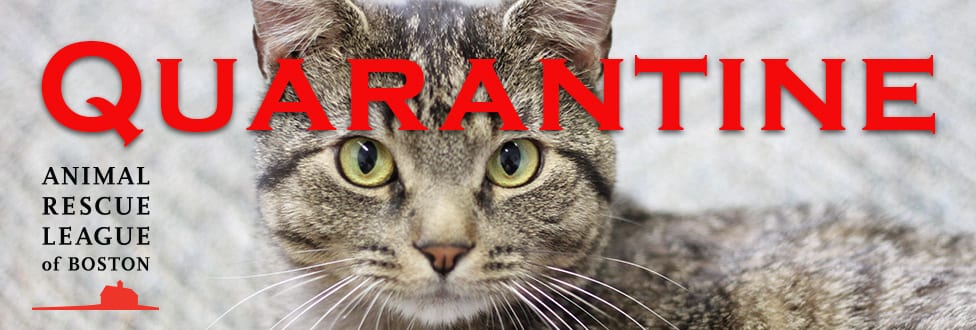Two Cats Taking Advantage of Change to Quarantine Law
Meet Lars and Bryan Adams!
With strong support and encouragement from the Animal Rescue League of Boston (ARL), in October 2016 Governor Charlie Baker made significant changes to Massachusetts state regulations, which included reducing the rabies quarantine period for shelter animals from six to four months. In the years to come, this change will have a tremendous positive impact on shelters throughout the Commonwealth, and ARL has already seen the effect – Which brings us to Lars and Bryan Adams.
Besides off-the-charts cuteness factors, Lars and Bryan Adams have several other things in common. On the same day in early December 2016, Lars was brought as a stray from Jamaica Plain to ARL’s Boston shelter; Bryan Adams was found as a stray in Eastham and brought to ARL’s Brewster shelter.
Both cats were injured: For Lars it was a pair of ugly wounds on his left hip, while Bryan suffered from a swollen and infected right front paw – both injuries were consistent with altercations with another cat.
The cats immediately entered the four-month quarantine period, just in case either animal engaged with a cat that was rabid, and transmitted the virus to Lars or Bryan. The handsome boys were treated with antibiotics and pain medication, and their wounds quickly healed. Both were isolated and received regular veterinary check-ups to see if they had been infected.

Lars (L) and Bryan Adams began their four-month quarantine period in December 2016. The average cost for a four-month quarantine is about $1,500.
Why the Regulation Changes Help Shelters AND Animals
The National Association of State Public Health Veterinarians issued new recommendations in the 2016 Compendium of Animal Rabies Prevention, advising the reduction of quarantine periods to four months. Why the reduction? Because evidence shows that animals in isolation for an extended period of six months can become stressed and depressed, even with regular human socialization.
Reducing the quarantine period also allow shelters like ARL to help more animals and ease financial constraints. From food, shelter to veterinary care, the average costs for a four-month quarantine are roughly $1,500, or $375 per month. The two-month reduction adds up to a $750 savings per animal.
“Overall the quarantine reduction does make a big difference,” said Dr. Erin Doyle, ARL’s Lead Veterinarian for Shelter Veterinary Services. “Four months is still well beyond our normal shelter length of stay so still requires extra measures such as office foster, but the two-month reduction does have a significant impact on how many rabies quarantine animals we’re able to care for.”
Ready to Go Home
Neither Lars or Bryan Adams have shown no evidence of a rabies infection, their wounds are healed, and with the quarantine period over, are ready to find their forever homes!
UPDATE: Certainly not a surprise, both Bryan and Lars were adopted quickly and are enjoying their new homes!
Extended Care Needs Extra Support
When an animal is under a four-month quarantine, space is extremely limited, and special measures need to be taken. Along with regular checks by veterinary staff for signs of rabies, because the animal is in isolation, extra efforts need to be made by volunteers, staff and foster parents to spend time with the animal, keep them calm and give them love. While reduced quarantine periods save ARL shelters time and money, the costs for a four-month quarantine are still about $1,500 per animal, which is why we appreciate and continue to ask YOU for your support to allow us to help more animals in need.


